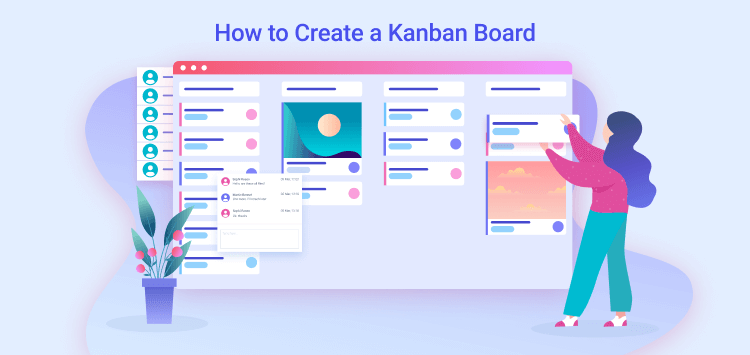Kanban has gained its reputation in the sphere of project management. It is an easy way of visualizing the most urgent needs of the current project. It helps to allocate tasks, to see the progress, to feel satisfied with the results, and to react fast to the requirements. In this article, we will give some general recommendations on how to start dealing with this nice tool and how to get the most out of it.
What is a Kanban Board?
First, the “just-in-time” production principle was used by Toyota company in 1959. They started experimenting with the Kanban system. That system was what we call the Kanban board nowadays, a commonly used tool in project management. It was literally the board workers put cards on, where they indicated either the work that had been performed or the product that was in demand. Thus, the supply of the product on demand was happening right at the moment it was needed, preventing superfluous storage. Today, there are many Kanban board examples that showcase different ways organizations implement this system for efficient workflow management.
Modern Kanban board used in software project management includes a table with three columns:
- “To-do” for the tasks on the waiting list
- “Doing/In Progress” for the ones in progress
- “Done” for the completed tasks
What Are the Benefits of a Kanban Board?
The advantages are quite obvious.
- Kanban boards are simple and easy to use.
- Kanban boards keep the whole team informed.
- Kanban boards help to instantly react to demands.
How To Create a Kanban Board?
1. Plan the Work.
First things first. Even the easiest tool should be explained to the team. It doesn’t matter whether you are planning to use a software solution as a virtual Kanban board, to have it physically in the office, to develop a solution yourself, or to use a third-party product, the main thing is to explain the necessity of this tool to the colleagues. And of course to tell them about the benefits and to agree on the period for feedback.
2. Choose Aboard.
If you are a small team working in one office, it is better to have a real board hanging somewhere on the wall of the meeting room. In this case, the team members see the progress, they are motivated, and satisfied with the performance.
On the other hand, if your team works remotely, or you hire specialists on the outsource, opt for a digital solution. Modern tools offered on the market presuppose cooperation, sharing results, commenting, chatting, and so on. There is definitely a solution for any project requirements.
Let’s look through some of the options available for those who don’t want to reinvent the wheel and are ready to rely on someone else’s solution.
1. Webix Kanban JavaScript UI Widget

A solution from the Webix UI Library. There are already those devoted to this tool and successfully using it in various projects. The examples can be found in this Medium article.
The functionality of this board is standard yet sufficient.
- Comments can be added to the tasks.
- Cards with tasks are added with a single click and dragged between the columns.
- Cards are editable, thus, attachments are added; colors, performers, and statuses are changed.
- Advanced features include swimlanes, filters, and highlighting.
2. DHTMLX Kanban

This is another powerful solution by the JS component library. It can be integrated with DHTMLX Gantt to receive a full and powerful project management tool. The Kanban board is customizable. Standard functionality is added with:
- time and deadline trackers
- setting priorities
- rich JS API
3. Syncfusion Kanban

This is one more similar board. It supports touch screens and easily adapts to mobile and desktop devices. Data bind seamlessly with various local and remote data sources, such as JSON, RESTful services, OData services, and WCF services. Among useful features are:
- Setting work in progress limits to avoid multitasking.
- Grouping logically related tasks.
- Freezing the rows to make them always visible when scrolling the board.
In Closing
Success comes with practice. It is not enough just to choose an appropriate Kanban board. More important is to use it efficiently. To gain the benefit out of this solution, it should be updated regularly, the information from it should be analyzed and used at meetings. The workload should be allocated in compliance with the requirements. The team will improve its performance by only implementing all those routine activities.
Follow Techdee for more!





